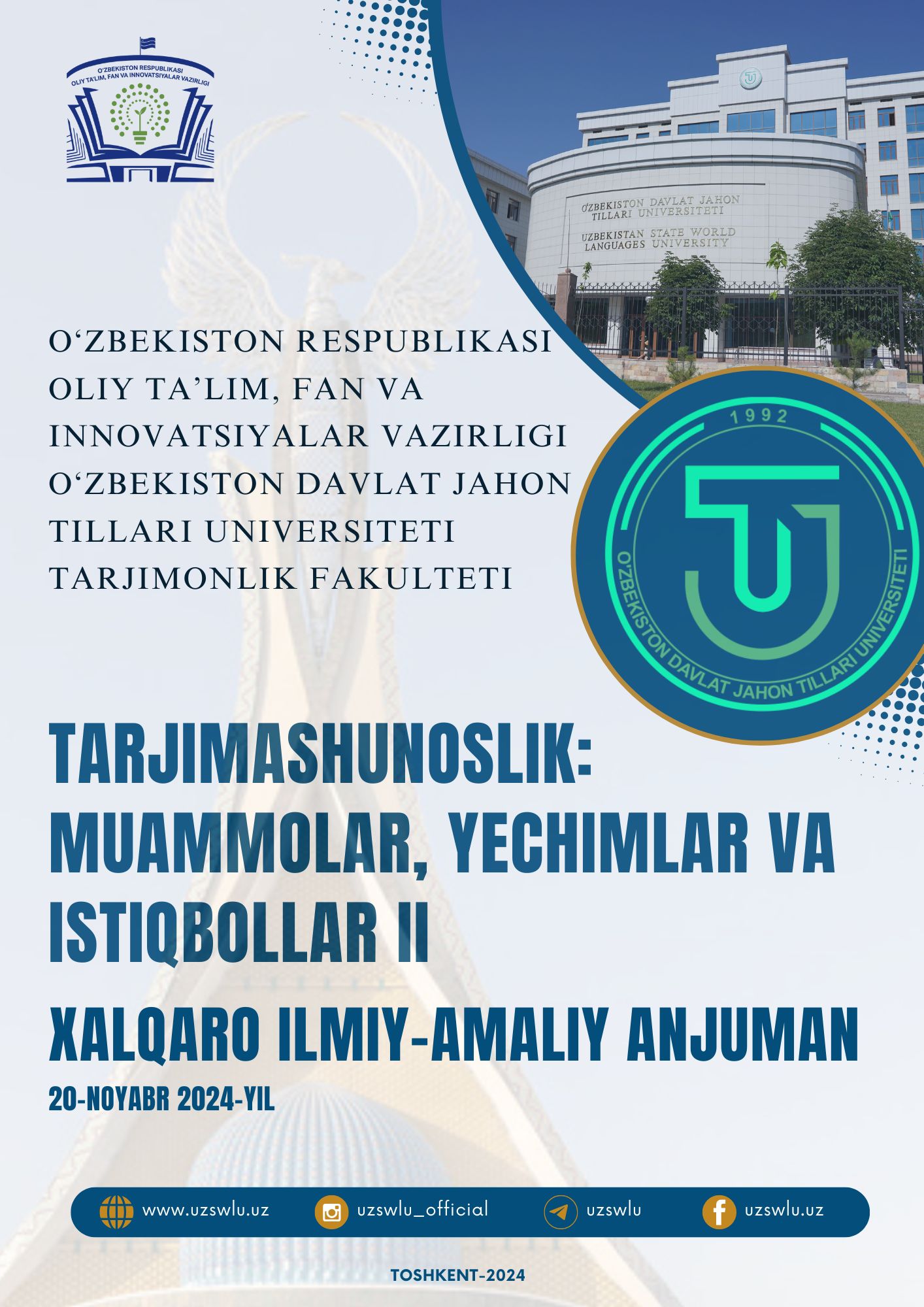TYPOLOGICAL ANALYSIS OF PHRASEOLOGICAL UNITS AS THE LINGUOCULTUREMES IN FILLIPINO (TAGALOG) AND ENGLISH LANGUAGES
Kalit so‘zlar
Phraseological units, Typology in linguistics, linguoculturemes, bilingual dictionaries, phraseology-specificAnnotasiya
Phraseological units, such as idioms, proverbs, and fixed expressions, serve as represent linguistic knowledge structures and carry the cultural meaning within any language. When these linguistic units are examined as linguoculturemes—language elements that encapsulate both linguistic and cultural information—reflect the values, beliefs, and social practices of a given culture. This study undertakes a typological and linguacultural analysis of phraseological units in Filipino and English to explore the cultural values embedded in each language. Results reveal that, while some phraseological units share universal human experiences, each language's unique phraseology reflects distinct cultural norms and worldview differences.
Foydalanilgan adabiyotlar ro‘yhati
Arora, S. (2001). The Cultural Aspect of Language: Phraseology as a Cultural Phenomenon. Berlin: Walter de Gruyter.
Wierzbicka, A. (1997). Understanding Cultures Through Their Key Words: English, Russian, Polish, German, and Japanese. Oxford: Oxford University Press.
Hofstede, G. (2001). Culture's Consequences: Comparing Values, Behaviors, Institutions, and Organizations Across Nations (2nd ed.). Thousand Oaks, CA: Sage Publications.
Garcia, R. C. (2006). Language, Culture, and Society in the Philippine Setting. Manila: University of the Philippines Press.

